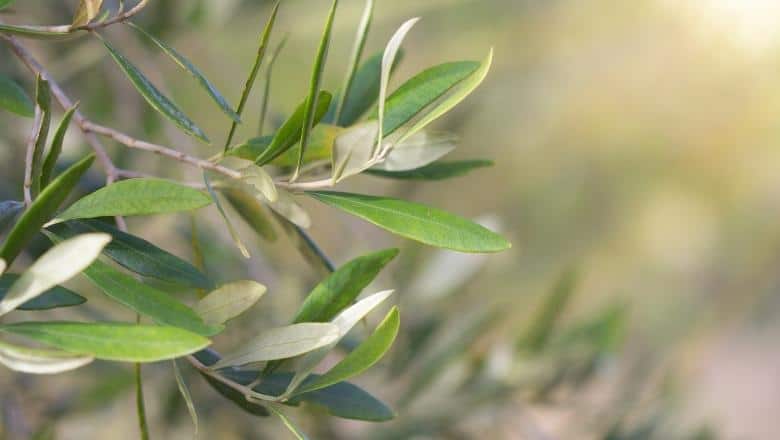How To Prevent Olive Tree From Losing Leaves
Olive Knowledge is a part of Amazon Associates. As an Amazon Associate, we earn from qualifying purchases. Read our Affiliate Disclosure to learn more.
Usually, olive trees start to lose their leaves when something’s wrong. If you have those problems, this article will help you learn how to prevent olive trees from losing leaves.
Key Takeaways:
- Plant olive trees in spring or mild autumn.
- Use sufficiently large pots.
- Ensure at least 6 hours of sunlight daily.
- Water regularly, especially in summer.
- Enrich the soil with key nutrients.
- Prune regularly for growth and health.
- Protect from extreme cold and drought.
How To Prevent Olive Tree From Losing Leaves: The Guide

Here’s a guide on how you can prevent an olive tree from losing leaves.
1. Plant Olive Tree In The Right Time
One of the most important things to growing a healthy olive tree is to plant them at the right time. Young olive trees are sensitive to frosts and droughts, and that should be avoided.
Most people like to plant their olive trees in the spring, between April and May, when the chances of frost are low. However, if the winters in your area are very mild, and the temperatures don’t go below 5° Celsius, you can also plant them in the autumn.
2. Make Sure That The Tree Is Inside a Large Enough Pot
If you’re growing an olive tree in pots, it’s important to make sure that the pot is large enough for the olive tree. As the olive tree grows, its roots expand, and it needs more space.
A pot that is too small will prevent olive trees from growing further, and it may even cause them to lose leaves. That’s why it’s important to put the olive tree in a suitable pot. Repotting olive trees is completely safe as long as you do it correctly.
3. Provide Enough Sunlight For The Tree
On average, olive trees need at least 6 hours of sun every single day. By mistake, some people keep them in the shadows, which is bad and can cause the tree to lose leaves.
If you’re growing olive trees in pots, it’s very straightforward to move them to a more suitable (sunny) area so that they can grow healthy. On a field, most olive trees will acquire enough sunlight, so you probably don’t have to worry too much about them. However, pruning may be essential (we’ll talk about that below).
4. Water Olive Tree Regularly
Even though olive trees are pretty tolerant of droughts, they still need water to stay healthy and produce plenty of fruits. To prevent the leaves from falling off, it’s important to water the tree regularly.
On average, olive trees need around 80-100 liters of water per square meter of the crop every month. During autumn, winter, and spring, most places will have enough rain, and the summer is usually the time you’ll have to pay more attention to watering olive trees.
5. Make Sure The Soil Has All The Important Nutrients
As you may know, olive trees are also pretty resistant to poor soils. However, in poor soil without many nutrients, olives won’t grow properly (even though they’ll stay alive). That’s why it’s important to feed the soil and the tree with important nutrients.
Extremely important nutrients for olive trees are nitrogen, phosphorus, potassium, and calcium. There are also other important nutrients, but these are the essential ones.
I wrote a thorough guide on fertilizing olive trees, so make sure to check it out. It’s pretty easy to follow, even if you’re a complete beginner.
6. Prune Olive Trees Regularly
Pruning olive trees is important because it stimulates growth but also opens the tree to more sunshine. So, by pruning olive trees, sunlight will more easily reach all the parts of the olive tree, and also, the fresh air will be able to go throughout the tree.
Pruning is also important to prevent fungal infections of the tree. Here’s a great guide on pruning olive trees. You can follow all the tips in that article.
7. Keep The Tree Away From Extreme Colds or Droughts
As I already told you, olive trees are pretty resistant to droughts and colds, but they still can’t grow anywhere.
If possible, you should move the tree away from extreme cold since it may damage the tree, causing it to lose leaves and, in the end, not produce fruits. For people that grow an olive tree in a pot, it’s very easy – just move the tree to a warmer area while the extremely cold time passes (inside the house or some other warmer place, just make sure it’ll have enough sunlight).
For droughty periods, make sure to provide the tree with enough water – I talked about it earlier in the article.
Why Do Olive Trees Lose Leaves
There are several reasons why olive trees may lose their leaves; most of them are connected to the above reasons, but there may be other reasons, too.
So, here are the most common reasons olive trees lose their leaves:
- Too much or not enough watering
- Extreme temperatures (both high and low)
- Not acquiring enough sunlight
- Very nutrient-poor soil
- Transition shock (when you repot the tree or move it around)
- Damaged or rotten roots
- Fungal infection (very dangerous)
- Soil is very moisture
- Olive knot disease
These were the most common reasons why olive trees started to lose their leaves. If you suspect some of the above, act quickly and fix the problem.
FAQ
-
Should olive trees lose their leaves?
Olive trees should never lose their leaves because they’re evergreen plants that have leaves all the time.
-
What are indications that olive trees’ leaves will start to fall off?
The most common indication that olive trees will lose leaves is if their leaves are mostly yellow or brown. Some leaves will always be yellow, but if the majority of the leaves are yellow or brown, something is wrong, and you should act quickly to find the reason for that and, in the end, fix it.
-
Can I revive the olive tree if all the leaves are lost?
In many cases, you’ll be able to revive the olive tree, even if all the leaves are lost. However, in order to do that, it’s important to find the right cause of the problem. Sometimes, the best thing you can do is to seek help from an expert.
-
How do you know if the olive tree is completely dead?
If the olive tree loses all its leaves, the branches are completely dry, and there are no new sprouts on the tree, it’s probably completely dead. However, you may still want to try bringing it back to life.
Conclusion

Preventing olive trees from losing leaves is actually just normal care for the tree. If you maintain your tree well, it’ll probably never lose leaves unless there’s some disease that you can’t influence.
Remember, the proper care for the tree will ensure that the tree lives long, and the most important thing is to produce plenty of fruit every single year. So, for whichever purpose you grow olive trees (olive oil, home design, garden design, etc.), always take proper care of them. By following the tips I gave you above, you’ll reduce the chances of your olive trees losing leaves.
